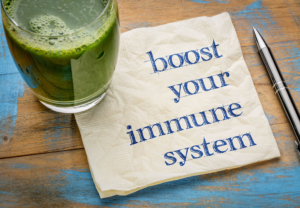

Time Is On My Side – LEF News Sandy Shaw
- by Life Priority
- No Comments
- Post Views: 1
The Durk Pearson & Sandy Shaw®
Life Extension NewsTM
Volume 20 No. 2 • March 2017
TIME IS ON MY SIDE … YES, IT IS
by Sandy Shaw
The difference between drug use and addiction or eating and metabolic diseases is time. The amount of time we take a potentially addictive drug determines whether we become addicted; this is also true for eating—eating for only a limited period of time can prevent the development of metabolic diseases, such as diabetes type 2 (Hatori, 2012).
An example of how time can determine the result of eating: a recent study of male mice fed a high fat diet found that restricting feeding to only eight hours a day WITHOUT REDUCING CALORIES as compared to being free to eat at any time prevented metabolic diseases (such as obesity, hyperinsulinemia, fatty liver, and inflammation).
Dopamine is required for the estimation of time by the internal clock. “Interval timing, the ability to discriminate durations in the seconds-to-minutes range, is a form of temporal cognition that requires an optimal level of dopaminergic function in cortico-striatal circuits in order to control time sharing and regulate clock speed.” A time interval is initiated by cortical oscillators in the ventral tegmental area of the brain by a burst of dopamine accompanied by a burst of theta power, which act as the “start gun” (Kononowicz, 2015).
The internal clock is critically controlled by dopaminergic agonists and antagonists. Dopamine agonists such as cocaine and methamphetamine (“speed”) have been shown to increase the speed of the internal clock, while dopamine antagonists such as haloperidol and raclopride have been shown to decrease the speed of the internal clock (Cheng, 2007).
In another study (Sysoeva, 2010), researchers found that there is an association of serotonin (5-HT) related genes with time perception. In their experiment, forty-four Russian Caucasian males (right handed and with a mean age of 22) compared two durations (they had to indicate which of them was shorter) on a computer monitor. “Many studies have reported an association between duration representation parameters and personality, specifically impulsivity and psychoticism.” Unsurprisingly, other studies have found psilocybin, a 5-HT (serotonin) receptor agonist, to affect time perception (Sysoeva, 2010).
“Despite the evidence … suggesting the centrality of DAergic [dopaminergic] modulation in mediating the drug-induced euphoria and timing distortions reported here, this explanation is likely an oversimplification of the processes underlying the individual differences observed in this study. Neuromodulators such as serotonin, GABA, glutamate, and norepinephrine, have also been found to influence time perception and to interact with DA [dopamine] in complex ways (Lake, 2013).” Another neurotransmitter with important effects on drug addiction and incentive-motivated behaviors is acetylcholine (Lester, 2010).
WHEN TIME SLOWS DOWN
You’ve all experienced it—the times when sudden danger appears, such as your car is about to hit a tree, and time slows release of adrenaline as you rapidly close in on the tree. As explained above, stimulants such as methamphetamine cause a large release of dopamine and this increases the speed of the internal clock. A hypothesis proposes that the reason this feels like time is slowing down is that your brain sees time as the amount of information it processes—the more bits of information is counted as a longer period of time compared to the usual number of bits you experience as “regular” time (Eagleman, 2005).
In a similar fashion, seeing an event in “slow motion” causes observers to believe that more time had passed than actually had (Caruso, 2016). Thus, time is underestimated.
A very recent paper (Soares, 2016) reported how mice judged the passage of time (judging the duration of intervals). Using a pharmacogenetic method to suppress dopaminergic neuronal activity in the substantia nigra pars compacta, they found that “[s]ituations in which DAergic [dopaminergic] activity is elevated naturally, such as states of high approach motivation, response uncertainty, or cognitive engagement are associated with underestimation of time. Conversely, situations that decrease DAergic activity, such as when fearful or aversive stimuli are presented are associated with overestimation of time.”
The bottom line: “… pleasurable events boost dopamine release, which should cause your internal clock to run faster … so that short intervals seem longer than they are (Simen, 2016).”
FLOW
Time stands still if you go fast enough.
—Stephen F. Kaufman, marial arts professional (Ch.
19 in his book “The Way Of The Modern Warrior”)
Who hasn’t experienced FLOW? The trick is being able to produce it when you want it.
Flow is often described as a state of effortless concentration so deep that people who experience it lose their sense of time. It gives you a sense of acting without conscious awareness, of time slowing down, of perceiving yourself to be moving through a dreamlike state.*
 Szxycj at English Wikipedia |
We knew a highly skilled champion racecar driver (Mickey Thompson) who told us that using a BLAST family formulation of ours had, in a very long off-road auto race (the BAJA 1000, when it was 1000 miles rather than 1000 kilometers) resulted in time slowing down, with everything happening exactly right and without any conscious effort on his part. He said that it felt like the flow he had experienced in his best races.
The formulation that Mickey took was one of those we designed for our own use that contains the amino acid phenylalanine. Phenylalanine can be converted into tyrosine (which is then converted to dopamine) but also into phenethylamine (also called phenylethylamine), a neuromodulator that provides mental energy like caffeine, but also acts as a stimulus barrier (helps to filter out distractions). Phenylalanine is found in our BLAST formulas.
Caffeine provides mental energy in a different way than phenylalanine (see above). Phenylalanine is a natural compound that increases dopamine (via conversion to tyrosine) but, unlike caffeine (a xenobiotic), it does not mimic the effects of amphetamine and cocaine, like caffeine can do at 4-5 times the average human consumption of coffee. At high doses (300-800 mg), caffeine can increase feelings of anxiety, nervousness, and insomnia. Caffeine does NOT have addictive potential at the usual level of human consumption (50-300 mg or 1-3 cups of coffee), but induces feelings of well-being, alertness, energy, and ability to concentrate. Most of the effects of caffeine are reported to take place at adenosine receptors, where caffeine is an inhibitor (Nehlig, 2000). There are other changes, though, which include a 26-30% increase in the densities of cortical muscarinic and nicotinic cholinergic receptors; the evidence supports significant alterations in adenosine, adrenergic, serotonergic cholinergic, and GABAergic systems (Shi, 1993).
NUTRIENTS THAT MODIFY THE SPEED OF THE INTERNAL CLOCK
The amino acid tyrosine is precursor to dopamine, that is, converted to dopamine. (The amino acid phenylalanine is converted to tyrosine, so it is an indirect precursor to dopamine.) As noted above, dopamine agonists increase the speed of the internal clock (Cheng, 2007; Meck, 1987). This feels like time is slowing down. (Interestingly, “flow” is a process in which time does feel as though it is slowing down.)
WHEN PLEASURE BECOMES A HABIT
In the scientific literature, addiction is often called habit formation. Habit formation differs immensely from goal-directed activity. Where goal-directed activity is influenced by the outcome of performing an action, addictive activity is not—a negative outcome does not influence it.** If an action is habitual, “then devaluation should have no effect on performance, since habits are elicited by antecedent stimuli which are not affected by devaluation. “… habitual behavior is not controlled by the action-outcome contingency … (Yu. 2009)”
This can be seen in lever pressing by experimental animals. “At first lever pressing is goal-directed and sensitive to manipulation like outcome devaluation. Under certain conditions, it can become more habitual and impervious to changes in the value of the outcome … Studies in flies, mice, rats, horses, monkeys, and humans have shown some version of this transition from more flexible and goal-directed behavior to inflexible and habitual behavior.” (Yu, 2009)
It was purely the feeling that had captivated me, made me sacrifice everything to it, gladly, joyfully. It was a seashell’s pristine whisper in my ear, warm sun rising in my heart, fireflies winking in the nerves.
—Will Bohnaker, Haunts of The Aardwolf, on the allure of caffeine
EATING: DELAY DISCOUNTING
A recent paper (Johnson, 2010) points to a proposal that “deficits in reward processing may be an important risk factor for the development of obesity, and that obese individuals may compulsively consume palatable food to compensate for reward hyposensitivity.” This is another way of saying “self-medication.”
The dopaminergic nervous system is critically involved in the perception of pleasure from eating and sex. In fact, “the degree of pleasure from eating correlates with [the] amount of dopamine release (Stice, 2008).” The chronic overeating of high fat and high sugar foods causes a decrease in the sensitivity of dopaminergic neurons as a result of down regulation (reduced signaling). Animal studies have found similar effects from overeating and also in response to chronic drug use. Both overeating and the use of addictive drugs cause down regulation of dopamine D2 receptors and decreased D2 sensitivity.
A deficiency in the release of dopamine in the dorsal striatum may also be seen in individuals with a certain variant (allele) of the D2 dopaminergic receptor gene, the Taq1A A1 allele; it is interesting to note that this allele is involved in impulsivity, which is defined as “the relative preference for a smaller reward, sooner in time, compared to a larger reward, later in time … (Eisenberg, 2007)” This is called delay discounting—and “non-human research suggests that corticostriatal mesolimic substrates mediate delay discounting performance and that dopamine is the critical neurotransmitter involved.” (Eisenberg, 2007) The famous marshmallow experiments were a particularly notable example of delay discounting.
MONOAMINE OXIDASE A (MAOA) AND IMPULSIVITY
Monoamine oxidase A (MAOA) is a gene importantly affecting impulsivity. “… the risk imparted by the specific genetic variation studied here [MAOA] contributes to the impulsive dimension of this complex behavior [aggression].” The monoamine oxidase A (MAOA) gene, is of two types—MAOA-L (the low expression variant) and MAOA-H (the high expression variant). MAOA-L is associated with an increased risk of violent behavior. “Arguably, the clearest link between genetic variation and aggression exists for monoamine oxidase A (MAO-A) … a key enzyme in the catabolism [breakdown] of monoamines, especially serotonin.” The enzyme catabolizes dopamine, serotonin, and norepinephrine, reducing their availability for signaling at neuronal synapses (Meyer-Lindenberg, 2006). Hence, reduced catabolism, as with the MAOA-L variant, will not decrease the availability of dopamine, serotonin, and norepinephrine for signaling as much as the MAOA-H variant.
Goal-directed dimensions of aggression have been associated with psychopathy, often accompanied by diminished empathy and remorse. In their study (Meyer-Lindenberg, 2006), the researchers found that “men, but not women, carrying the low-expression MAOA genotype showed increased [emotional] reactivity during retrieval of negatively valenced emotional material.” Interestingly, men have only one allele (copy) of the MAOA gene, whereas women have two. The reason for this is that men have only one X chromosome (where the MAOA gene is located), while (of course) women have two. Interestingly, estrogens have been shown to affect the expression of MAOA in the brain (Meyer-Lindenberg, 2006).
Higher dominance has been associated with the low expression variant of MAOA (MAOA-L) and aggression in males in studies of primates.
SEROTONIN AND IMPULSIVITY
As noted above, serotonin deficiency is associated with impulsive behavior. This can be corrected by taking tryptophan, the amino acid that is converted to 5-hydroxytryptophan by the enzyme tryptophan hydroxylase and then to serotonin. However, some individuals are unable to make this conversion in sufficient amounts because their version of the enzyme lacks adequate potency. A way to overcome this is to take 5-HTP (5-hydroxytryptophan), which bypasses the need for tryptophan hydroxylase. We suggest taking 25 to 50 mg of 5-HTP at bedtime. We get ours from our Serene Tranquility with 5-HTP.™
DELAY DISCOUNTING MEETS THE GRASSHOPPER AND THE ANT
 The Ant and the Grasshopper |
Another experiment on delay discounting (like the marshmallow experiments) was performed in human subjects, who made a series of choices between early and delayed monetary rewards while they were examined by fMRI (functional magnetic resonance imaging) (McClure, 2004). As a result, the researchers developed a hypothesis for how the brain decides between the early and later rewards. “… we hypothesize that short-run impatience is driven by the limbic system, which responds preferentially to immediate rewards and is less sensitive to the value of future rewards, whereas long-run patience is mediated by the lateral prefrontal cortex and associated structures, which are able to evaluate trade-offs between abstract rewards, including rewards in the more distant future.”
They allude to the metaphor of the grasshopper and the ant. The grasshopper spends its time enjoying the present and ignoring what may come later, while the patient ant works diligently preparing for the future. The authors call delay discounting the competition between the “impetuous limbic grasshopper” and the “provident prefrontal ant.” (McClure, 2004).”
In sum, the researchers suggest that “human behavior is often governed by a competition between lower level, automatic processes that may reflect evolutionary adaptations in particular environments, and the more recently evolved, uniquely human capacity for abstract, domain-general reasoning and future planning.”
Another hypothesis on the neurochemistry of delay discounting (Kravitz, 2012) proposes that addiction (in which the future consequences of using drugs are ignored) depends upon the interaction between dopamine D1 receptors and dopamine D2 receptors: dopamine D2 receptors counteract dopamine D1 receptors in determining the probability of performing a future action. The D1 receptors induce persistent reinforcement, while the D2 receptors induce transient “punishment” (negative signaling) for the performance of a future action. “In contrast, depression is marked by impaired reinforcement from positive stimuli and heightened punishment from negative stimuli (Kravitz, 2012).”
SPEAKING OF ANTS …
Yes, speaking of ants, a recent paper appeared in the “Research Highlights” section of the 29 Sept. 2016 Nature which reported that ants can get hooked on morphine. The ants were given access to sugar water laced with morphine. Then, over the course of several days, the amount of sugar in the water was reduced while the morphine content was increased, until eventually there was NO sugar in the water, only morphine. The ants, given a choice between sugar water and the sugar-free morphine solution, preferred the sugar-free morphine by 65% to 35%. Plus the ants’ brains showed elevated levels of dopamine, just as addicted mammals do. The authors were said to suggest that ants might make a good model for studying addiction in humans. Durk wonders why 35% of the ants DIDN’T choose morphine … Sandy suggests that maybe those ants had a different version of the D2 dopamine receptor.
HIGH IMPULSIVITY PREDICTS THE SWITCH TO COMPULSIVE COCAINE-TAKING
Rats, like humans, can get addicted to drugs. When rats are exposed to cocaine, 15-20% of them become addicted, which is similar to that observed in humans (Belin, 2008).
“… the essential feature of addiction … [is] … the persistence of drug-seeking in the face of negative consequences …” explain researchers in a 2008 paper (Belin, 2008). In their study, they found that high impulsivity “predicts the development of addiction-like behavior in rats … [and they note that, in humans,] … there is a high comorbidity between drug addiction and disorders characterized by impulsive behavior, such as attention deficit-hyperactivity disorder.”
Low serotonin levels are thought to be a cause of impulsivity. For example, reducing serotonin levels by tryptophan-restricted diets results in more impulsive choices in experiments. A recent paper (Bevilacqua, 2010) found that a mutation in the serotonin 2B receptor predisposed a Finnish population to severe impulsivity.
Lithium may reduce impulsivity, but studies reporting this association have involved doses much higher than the low-dose form that we use. One such study (in rats) found that a “moderate” dose of lithium (20 mg/kg) suppressed impulsive behavior (Ohmura, 2012). Research involving the low concentrations of lithium found in mineral waters and in some tap water has reported reduced impulsiveness and suicide in people.
Another way to reduce impulsivity is to take tryptophan (precursor to serotonin). See above in “Eating: Delay Discounting.”
Life Priority, established in 1994, offers supplements that are scientifically-formulated, results-oriented, and GRAS (Generally Recognized As Safe) and are manufactured at USDA and FDA inspected facilities.
*The products and statements made about specific products on this web site have not been evaluated by the United States Food and Drug Administration (FDA) and are not intended to diagnose, treat, cure or prevent disease. All information provided on this web site or any information contained on or in any product label or packaging is for informational purposes only and is not intended as a substitute for advice from your physician or other health care professional. You should not use the information on this web site for diagnosis or treatment of any health problem. Always consult with a healthcare professional before starting any new vitamins, supplements, diet, or exercise program, before taking any medication, or if you have or suspect you might have a health problem.
*Any testimonials on this web site are based on individual results and do not constitute a guarantee that you will achieve the same results.
Sign up for emails from OneHeartNetwork.com:
By providing your email address, you are agreeing to our privacy policy.



